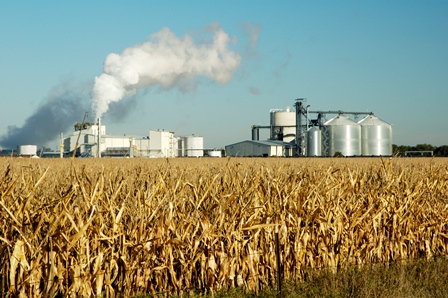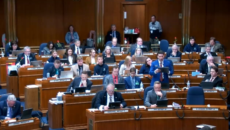It's Not The Global Warming, It's The Subsidies

The Wall Street Journal has an article today about the corn belt moving north to North Dakota which, historically, doesn’t have the ideal climate for growing corn. So what’s driving this trend? According to the WSJ, it’s global warming:
The shift, which is occurring in northern Minnesota and Canada’s Manitoba province as well, shows how warming temperatures and hardier seeds are enabling farmers to grow corn in areas once deemed inhospitable to the crop. As a result, North Dakota’s farmers, who produced 4% of last year’s U.S. corn crop and are benefitting from high prices for other crops, are invigorating the state’s agricultural economy at the same time its energy sector is thriving.
Corn prices are about double historical norms, driven by food demand in China and other fast-growing countries, as well as the rise of U.S. ethanol production.
North Dakota farmers are absolutely growing more corn, and that’s absolutely driving up other crop prices as corn diminishes the number of acres attributed to them. But it’s not global warming that’s driving this trend. Anyone who lives in North Dakota knows that the last several years we’ve enjoyed long, chilly springs and unseasonably cold summers.
The climate in North Dakota isn’t more inviting to corn. It’s that corn prices, heavily inflated by government demand for ethanol, are high enough to tempt farmers to plant corn even in marginal areas. The 2007 U.S. energy bill mandated that a total of 15 billion gallons of renewable ethanol must be produced by 2015. Because of this, demand for corn has skyrocketed, and the impact of that market distortion has been felt across the crop markets.
And that’s not just creating a bubble in crop prices. It’s creating a bubble in land values too, which also shows that this isn’t about global warming.
Here in North Dakota farm values jumped an average of 46% in 2012, and land values have more than doubled since 2009. In other parts of the country farmers are saying that land is overvalued, and that we’re in the midst of a bubble.
With farm land becoming more valuable, and with the warming climate supposedly making more land open for farming more crops, we should see crop prices going down. But we’re not. Crop prices are going up along with land values.
That’s a bubble created by artificial demand for ethanol.
The question is, what happens to the bubble if the government stops subsidizing ethanol? What happens to the economy in places like North Dakota if farm land values and crop prices crash?
Nothing good, I’m afraid, but the US taxpayer can’t afford to subsidize ethanol in perpetuity.







